
RobertBelleman
Lecturer and researcher
Manager of the Visualisation Lab at Science Park
Postal address: Postbus 94323 · 1090GH Amsterdam · The Netherlands
(+31) 20 525 7272 · R.G.Belleman@uva.nl
Interests
XR/MR/VR/AR, Scientific Visualisation, Computer Graphics. You can probably tell I'm a visual thinker. Most of my professional interests revolve around graphics and visualization, always with the purpose to invoke a "aha!" experience with people.
VR/AR in Education
In education we sometimes find subjects and concepts that are difficult to teach using conventional teaching methods. These may for example be difficult to imagine, while others may be too dangerous or too expensive to study in real life. These subjects can benefit from teaching modules that use VR and/or AR as the way to communicate these subjects.
Here are some examples:
Development of the human embryo
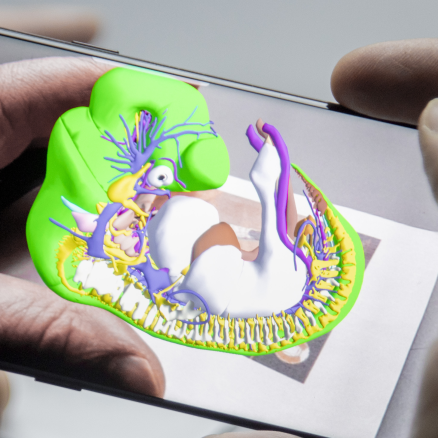
Using 3D models provided to us by the Department Medical Biology at Amsterdam UMC, we built an AR app to interactively explore the data from the 3D Atlas of Human Embryology. This application provides an unprecedented educational tool to study the development of the human embryo with little more than a modern smartphone.
Anatomy of a frog
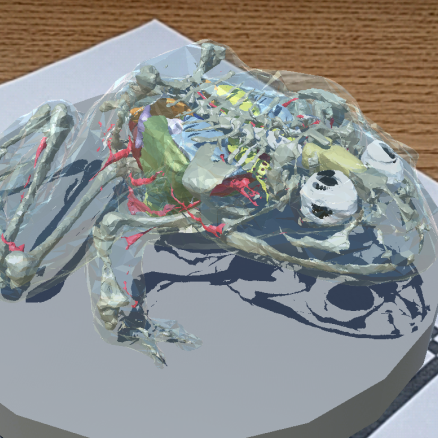
In one of the projects for my course on Scientific Visualization and Virtual Reality, I had students create an Augmented Reality app to study the anatomy of a frog, using the "WholeFrog" dataset. The objective was to create an intuitive application that would allow students to study the frog's anatomy using just their smartphone and a printed marker. The application had to have interaction facilities by which specific tissue types could be selectively made (in)visible.
Studying molecular symmetry in AR
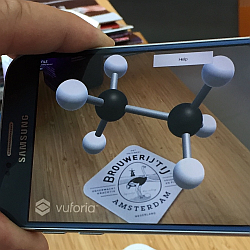
Molecular symmetry is a fundamental concept in chemistry to understand the chemical properties of a molecule. Conventional teaching methods use special notations to represent the spatial arrangement of a molecule, but these can be hard to interpret. Other methods use physical models, but these are not always available to students. For his bachelor graduation project in 2017, Rob Kunst developed an Augmented Reality application for smartphones that uses marker recognition to interactively explore the symmetrical properties of a molecule.
Learning to program in VR
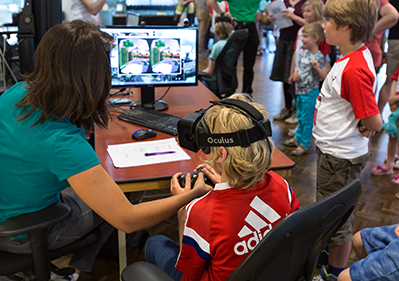
In 2015, Tessa Klunder created a VR environment for children to teach them the fundamentals of programming. The application put them in a robot placed in a virtual maze that could only be escaped by programming the robot to escape the maze. The children would solve increasingly more difficult mazes until they eventually implement the right-hand rule wall follower algorithm to exit any maze. (thesis)
Anxiety in Virtual Reality
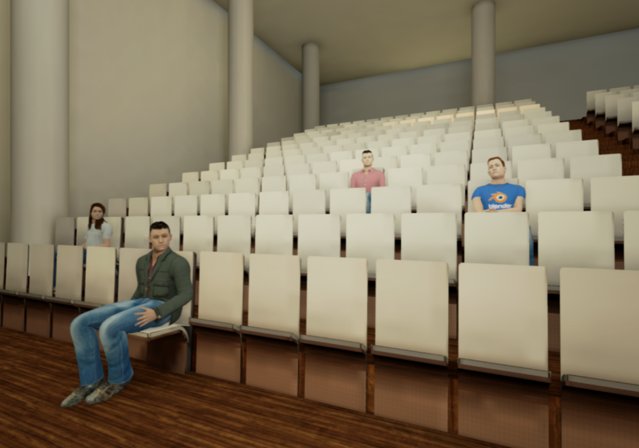
In 2015, Iulia Ionescu created a reproduction of the large lecture hall (C1.110) of the Faculty of Science at Science park. The VR application allowed her to place a virtual audience in the lecture hall to help train students with a fear of presenting in front of a large audience. Iulia compared the effect of her application on people presenting in the virtual lecture hall with those presenting in the real lecture hall. (thesis)
Projects
International research projects and other nifty stuff I have worked on.
DynaNets
 DynaNets was an EU FP7 FET
Open project that studied complex systems through dynamically
changing networks. My involvement in this project is Twilight; a
high-performance interactive visualization application to
graphically explore dynamic networks.
DynaNets was an EU FP7 FET
Open project that studied complex systems through dynamically
changing networks. My involvement in this project is Twilight; a
high-performance interactive visualization application to
graphically explore dynamic networks.
UrbanFlood
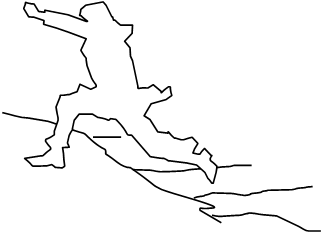 UrbanFlood studied
the use of sensors within flood embankments to support an online
early warning system, real time emergency management and routine
asset management. My work in this projects involved the design
and implementation of a decision support system for use in
emergency situations.
UrbanFlood studied
the use of sensors within flood embankments to support an online
early warning system, real time emergency management and routine
asset management. My work in this projects involved the design
and implementation of a decision support system for use in
emergency situations.
ACGT
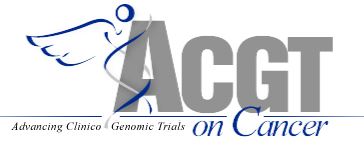 ACGT was an EU FP6 Integrated
Project that studied how high-performance computing facilities
provided over Grid infrastructures could facilitate
post-genomics research, clinical trials and simulation
techniques. I was involved in the development of tools for the
visualization of clinical data from simulation predictions as
well as the Grid Interface and applications.
ACGT was an EU FP6 Integrated
Project that studied how high-performance computing facilities
provided over Grid infrastructures could facilitate
post-genomics research, clinical trials and simulation
techniques. I was involved in the development of tools for the
visualization of clinical data from simulation predictions as
well as the Grid Interface and applications.
VL-e
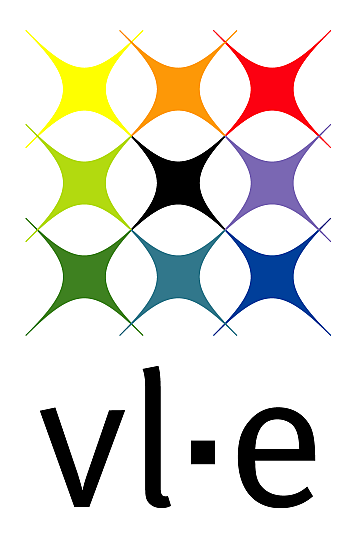 The Virtual Laboratory for eScience (VL-e) was a Dutch project to
enhance scientific research through grid-technology, financed by
a BSIK grant from the Dutch Ministry of Education, Culture and
Science (OC&W). I coordinated a subprogramme on grid applications
for medical imaging and diagnostics. This research consisted of
partners from academia and industry, including AMC, VUmc, Philips Research, Philips Medical
Systems and IBM.
The Virtual Laboratory for eScience (VL-e) was a Dutch project to
enhance scientific research through grid-technology, financed by
a BSIK grant from the Dutch Ministry of Education, Culture and
Science (OC&W). I coordinated a subprogramme on grid applications
for medical imaging and diagnostics. This research consisted of
partners from academia and industry, including AMC, VUmc, Philips Research, Philips Medical
Systems and IBM.
High School Computer Science
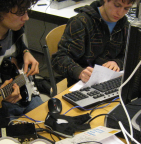 I was a Computer Science guest lecturer for students from four
Amsterdam high schools: Fons Vitae, Ignatius, Montessori and Sint
Nicolaas. Together with high school teachers we created teaching
material to stimulate student interest in Computer Science, which
certainly helped because a significant number later enlisted at a
university! Final-year students worked on a Big Computer
Science Project which, during a final demonstration, were
graded by UvA professors Lynda Hardman, Harry Buhrman and Paul
Klint. The Dutch website Leraar24 created a
video of the event that took place in 2011 (in Dutch).
I was a Computer Science guest lecturer for students from four
Amsterdam high schools: Fons Vitae, Ignatius, Montessori and Sint
Nicolaas. Together with high school teachers we created teaching
material to stimulate student interest in Computer Science, which
certainly helped because a significant number later enlisted at a
university! Final-year students worked on a Big Computer
Science Project which, during a final demonstration, were
graded by UvA professors Lynda Hardman, Harry Buhrman and Paul
Klint. The Dutch website Leraar24 created a
video of the event that took place in 2011 (in Dutch).
UvA-MTT: the UvA Multi-Touch Table
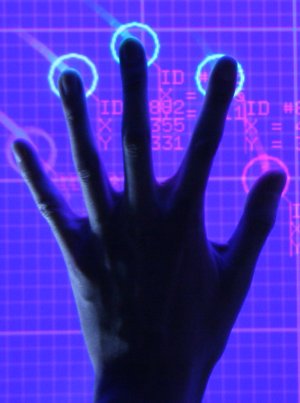 For SuperComputing 2008 (SC08) in Austin, TX, we designed and
built a multi-touch surface display to demonstrate an application
that allows interactive monitoring and control of a programmable
computer network. This work was done in collaboration with
Laurence Muller, Paul Melis, Rudolf Strijkers and the System and
Network Engineering (SNE) group at UvA.
For SuperComputing 2008 (SC08) in Austin, TX, we designed and
built a multi-touch surface display to demonstrate an application
that allows interactive monitoring and control of a programmable
computer network. This work was done in collaboration with
Laurence Muller, Paul Melis, Rudolf Strijkers and the System and
Network Engineering (SNE) group at UvA.
Direct gravitational N-body simulations on a GPU
 Together with Simon Portegies Zwart and Jeroen Bédorf we worked
on a GPU implementation of a direct gravitational N-body
simulation for astrophysics simulations, implemented in NVIDIA's
CUDA. This work attracted quite a lot of attention, which resulted in
spin-offs to e.g. molecular dynamics simulations. The New
Astronomy paper we wrote about this work got a "Top
Cited Article 2005-2010" award from Elsevier.
Together with Simon Portegies Zwart and Jeroen Bédorf we worked
on a GPU implementation of a direct gravitational N-body
simulation for astrophysics simulations, implemented in NVIDIA's
CUDA. This work attracted quite a lot of attention, which resulted in
spin-offs to e.g. molecular dynamics simulations. The New
Astronomy paper we wrote about this work got a "Top
Cited Article 2005-2010" award from Elsevier.
A Window into Virtual Reality
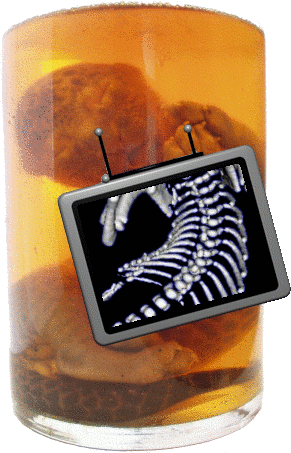 For SuperComputing 2004 (SC04) in Pittsburgh and iGrid 2005 in
San Diego we developed an Augmented Reality demonstration for the
co-located visualization of virtual objects over physical
objects. We showed how a low-performance handheld tablet PC could
be used to inspect a CT scan of a panther cub contained in a
glass jar filled with ethanol, which is why it became known as
"the dead cat demo". This work was a proof-of-concept
demonstration for the VL-e project to show that it is possible to
create a highly interactive visual experience using high-speed
networks and high-performance remote visualization resources.
For SuperComputing 2004 (SC04) in Pittsburgh and iGrid 2005 in
San Diego we developed an Augmented Reality demonstration for the
co-located visualization of virtual objects over physical
objects. We showed how a low-performance handheld tablet PC could
be used to inspect a CT scan of a panther cub contained in a
glass jar filled with ethanol, which is why it became known as
"the dead cat demo". This work was a proof-of-concept
demonstration for the VL-e project to show that it is possible to
create a highly interactive visual experience using high-speed
networks and high-performance remote visualization resources.
Interactive Exploration in Virtual Environments
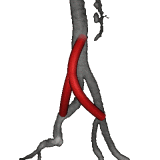 My PhD research was on the use of interactive virtual
environments for decision support. Much of this took place in a
CAVE installed at SARA, Amsterdam. As one of the test cases, we
built a virtual operating theatre to simulate vascular
reconstruction. This environment combines interactive
visualisation of patient-specific vascular image data with a
flow simulation environment into a virtual operating theatre in
which vascular reconstruction procedures can be simulated. We
use a lattice Boltzmann flow simulation technique to simulate
blood flow through human vascular geometry, the results of which
are visualized so that a vascular surgeon can interactively
explore alternative treatments for a patient. The idea is that a
vascular surgeon uses these simulation results to form a decision
on which treatment could be best for a patient.
My PhD research was on the use of interactive virtual
environments for decision support. Much of this took place in a
CAVE installed at SARA, Amsterdam. As one of the test cases, we
built a virtual operating theatre to simulate vascular
reconstruction. This environment combines interactive
visualisation of patient-specific vascular image data with a
flow simulation environment into a virtual operating theatre in
which vascular reconstruction procedures can be simulated. We
use a lattice Boltzmann flow simulation technique to simulate
blood flow through human vascular geometry, the results of which
are visualized so that a vascular surgeon can interactively
explore alternative treatments for a patient. The idea is that a
vascular surgeon uses these simulation results to form a decision
on which treatment could be best for a patient.
Courses
Courses that I teach.
Scientific Visualization and Virtual Reality
Graphics and Game Technology
Web programming and Databases
Bachelor Informatica Graduation Project
If you're a company and you are interested in our students, then please submit a research project proposal.
Publications
Skills
Certainly not intended as an exhaustive list (there aren't enough icons for that), more to give you an idea about what makes me tick.
- Scuba diving (yes; even in winter in the Netherlands)
- Tinkering with electronics
- Music: I play guitar, sing when I have to, and I like to fool around with electronic music